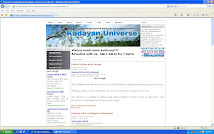Tuesday, June 24, 2008 provided by U.S.News

According to the mileage book in my glovebox, I averaged about 21 miles per gallon in May. So far in June, I'm at 26.
New, more fuel-efficient, car?
Nope, I'm commuting in the same old Volvo S60 that has seen better days. Same dent in the right rear door. Same old Cheerios wedged under the child safety seat in back. (Yeah, I know. I'll get to it, Honey).
So how did I do it? I'm trying to learn to drive more efficiently, and little by little, it's working. With a few simple changes, you can easily squeeze more gas mileage out of the car you're already driving.
A Note on the Calculations:
Your mileage will vary. Governments and automakers estimate fuel mileage savings by percentage -- do x and you'll get five percent better fuel mileage. I wanted to know what they meant in real dollars, so I used the average mileage Americans actually got from their cars in 2007 (22.4 mpg, according to the Bureau of Transportation Statistics) and boosted it by the percentage each tip should gain. I've assumed you spend 55 percent of the time driving in the city and 45 percent driving on the highway. I borrowed those assumptions from the formula EPA uses to calculate the mileage of new cars.
Using the average price of a gallon of gas as of June 12 ($4.05, according to AAA) and assuming you drive 15,000 miles a year (according to EPA estimates), I calculated what each tip would save in a year. The numbers aren't a perfect prediction -- I have no idea what you drive, or what's in your trunk -- but they do provide an interesting perspective. Here are ten easy ways to put the math to the test and put some more cash in your wallet.
1. Get that "Check Engine" Light Checked Out:
Possible Savings: Off the charts
A faulty oxygen sensor -- a fairly common cause of those unexplained "check engine" lights -- can actually cost you up to 40 percent of your engine's performance. If the light's on, make the appointment now. It could pay for itself very quickly.
2. Check Your Tire Pressure:
Possible Savings 133.9 gallons/year ($542/yr)
According to some government estimates, the average driver could boost their fuel efficiency by 25 percent just by keeping their tires inflated. That's often a free, or cheap, repair. On my way to work, I pass two gas stations with air compressors I can use for free, and three -- apparently owned by cheapskates -- that take quarters.
3. Change Your Air Filter:
Possible Savings 60.9 gallons/yr ($247/yr)
Gas is half of the combustion equation. Air is the other half. A clogged air filter can rob 10 percent of your engine's efficiency. A new air filter can get that 10 percent back -- usually for under $15.
4. Drive 60 on the Highway, Not 75:
Possible Savings: 57.8 gallons/year ($234/yr)
On the highway, stay close to the speed limit, and keep your speed as constant as traffic allows. Most cars reach optimal gas mileage at about 60 miles per hour. Speeding up increases wind resistance against the car, making the engine work harder and burn more gas. According to the EPA, each 5 mph over 60 that you drive decreases fuel efficiency by up to seven percent.
5. Turn Off the A/C:
Possible Savings 31.9 gallons/yr ($129/yr)
Some air conditioners rob an engine up to five percent of its fuel economy. There is some controversy about this one -- many newer cars are able to compensate for the energy used by an air conditioner and don't suffer the same penalty for keeping cool.
6. Get Your Engine Tuned:
Possible Savings 25.8 gallons/year ($104/yr)
Most of us can boost our mpg by four percent with a simple tune-up.
7. Drive Calmly in the City
Possible Savings: 17.9 gallons/yr ($73/yr)
There's a red light up ahead. You're going to stop when you get to it. Do you keep your foot on the gas until it's time to brake for the light? Most of us do, but that doesn't necessarily make sense. The Environmental Protection Agency estimates that accelerating rapidly and braking hard can reduce your car's fuel efficiency by as much as five percent. And that may be a low estimate. Look at it this way -- are you willing to spend money to stop at that light sooner?
8. Lose Weight:
Possible Savings 13.1 gallons/yr for each 100 pounds you remove ($104/yr)
Government estimates say that an extra 100 pounds in your car can reduce fuel efficiency by up to two percent. And that's an average -- the smaller the car, the more extra weight makes the engine work harder.
So, empty the trunk. In winter, don't just scrape the windshield, scrape the entire car -- snow and ice add to the weight of your car.
9. Lose the Roof Rack
Possible Savings 13.1 gallons/year ($53/yr)
Wind resistance is the enemy of fuel efficiency. Do you have a roof rack? Every time you drive, it's making your car fight wind resistance, and burn fuel. Most of the time, that's money you're spending to carry an empty roof rack. Get a two percent boost by taking the thing off.
10. Change Your Oil on Time
Possible Savings 6.6 gallons/year ($27/yr)
After 3,000 miles, changing your oil (using the recommended grade) gives you back one percent of your car's mpg rating.
How Much Can You Save?
If you follow the tips above, that's $1,514 less you could spend on gas in the next year. Though it's a rough estimate, it shows you what small changes in your habits -- most of which you can make for free -- could do for your wallet.
Source : Click here .



























